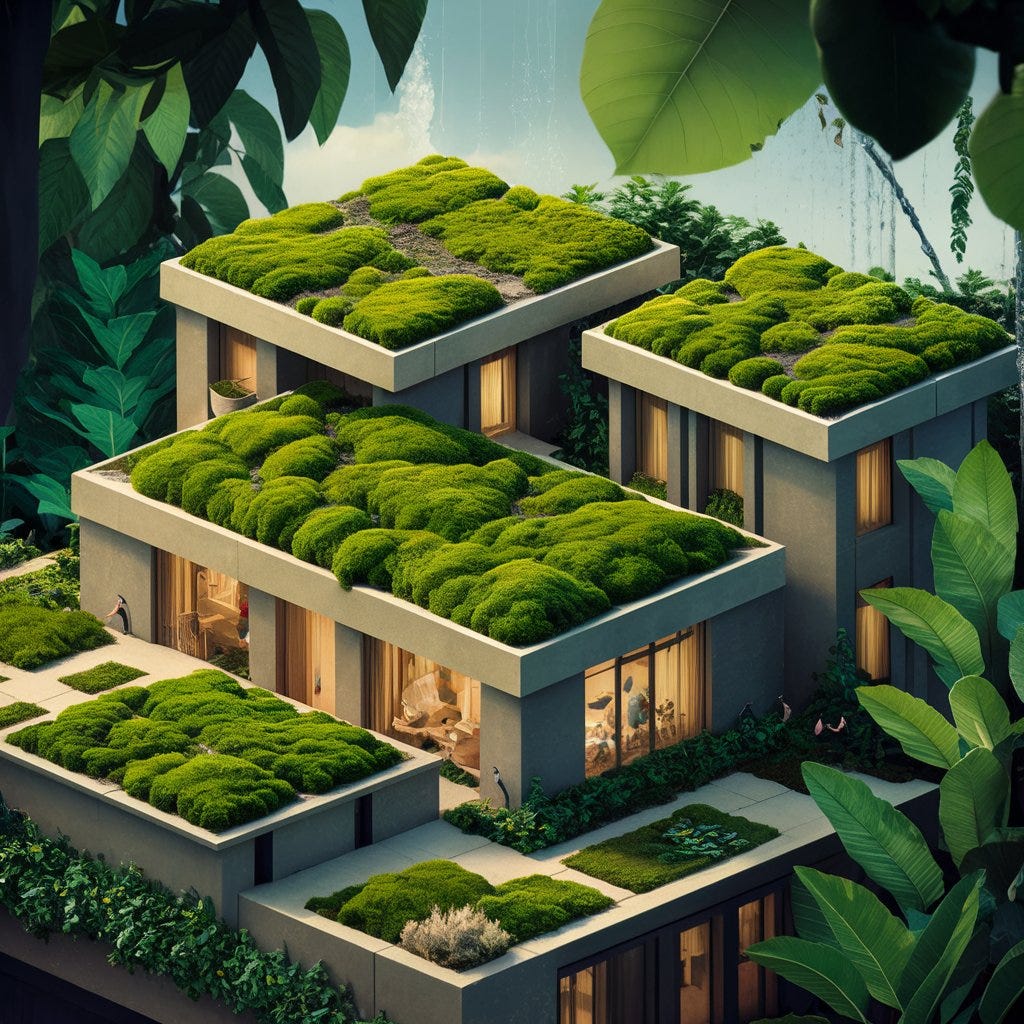Moss Roofs: The Green Wonder Revolutionizing Modern Architecture
Moss Roofs: A Green Solution for Modern Buildings

Imagine a city that is not only visually stunning but also cool, lush, and environmentally friendly. Imagine buildings that breathe, absorb pollution, and become homes for various living creatures. Imagine roofs that are no longer just coverings but refreshing green oases. All of this is no longer just a dream but a reality that is getting closer thanks to the wonder of moss.
Moss, a small plant often overlooked, turns out to have extraordinary potential as a revolutionary roofing material. In-depth research from various parts of the world has revealed the amazing benefits of moss as a green roof, changing the paradigm of modern architecture.
1. Fortress of Defense Against Flooding: Moss roofs act as natural sponges capable of absorbing rainwater significantly, reducing the burden on urban drainage systems and the risk of flooding. Research at Gadjah Mada University (UGM), Indonesia, shows that moss roofs can absorb up to 80% of rainwater, making them an effective solution to address the worsening problem of urban flooding (Source: UGM Research Journal, 2013).
2. Natural Temperature Regulator: The extraordinary thermal insulation properties of moss help keep building temperatures comfortable throughout the year, reducing reliance on air conditioners and heaters. Research at the Norwegian University of Life Sciences, Norway, reveals that moss roofs can reduce energy needs for heating and cooling by up to 20%, contributing to energy savings and carbon emission reduction (Source: Norwegian Renewable Energy Journal, 2018).
3. Natural Air Purifier: Moss acts as an effective natural biofilter, absorbing air pollutants such as dust, fine particles, and harmful gases. Research at Oregon State University, United States, shows that moss roofs can reduce air pollutant concentrations by up to 50%, improving the quality of increasingly polluted urban air (Source: Oregon Environmental Journal, 2020).
4. Biodiversity Haven: Moss roofs become oases for various living creatures, providing habitats for insects, birds, and microorganisms. Research at the University of Sheffield, England, shows that moss roofs can increase the number of insect species by up to 40%, contributing to the preservation of urban biodiversity (Source: Urban Ecology Journal, 2019).
5. Aesthetic Wonder: Moss roofs are not only functional but also offer unique and soothing natural beauty. The refreshing green color of moss gives a different aesthetic touch to buildings, creating an atmosphere that is harmonious with nature. Additionally, moss can also help reduce the urban heat island effect by lowering roof surface temperatures.
6. Promising Local Potential: In Indonesia, research on the use of moss for house roofs is also growing. Gadjah Mada University and Bandung Institute of Technology have conducted in-depth research on the potential of local moss as a green roof material that is adaptive to the tropical climate, opening up new opportunities for the development of sustainable green architecture in Indonesia (Source: Indonesian Tropical Architecture Journal, 2022).
Moss roofs are no longer just a futuristic concept but a real solution to create greener, healthier, and more sustainable urban environments. With its extraordinary benefits, moss roofs are ready to revolutionize the world of modern architecture and lead us towards a brighter future.



